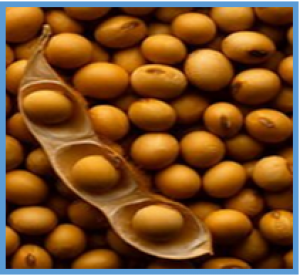Soybean oil contains approximately 20% oleic acid and 63% polyunsaturated fatty acids, which limits its uses in food products and industrial applications because of its poor oxidative stability. Increasing the oleic acid content in soybean seeds provides improved oxidative stability and is also beneficial to human health. Endoplasmic reticulum-associated delta-12 fatty acid desaturase 2 (FAD2) is the key enzyme responsible for converting oleic acid (18:1) precursors to linoleic acid (18:2) in the lipid biosynthetic pathway.
The cell wall degrading enzymes (CWDEs) secreted by necrotrophs are important virulence factors. Although not unequivocally demonstrated, it has been suggested that necrotrophs induce hosts to cooperate in disease development through manipulation of host CWDEs. The necrotrophic fungus, Macrophomina phaseolina (Tassi) Goid. (MP), causes charcoal rot disease in Sorghum bicolor (L.) Moench. An RNA-seq experiment was conducted to investigate the behavior of sorghum CWDEs encoding genes after MP inoculation.
Genomic regions free of nucleosomes are hypersensitive to DNase I digestion. These genomic regions are known as DNase I hypersensitive sites (DHSs) and frequently contain cis-regulatory DNA elements. We developed high-resolution genome-wide DHS maps in maize using a modified DNase-seq technique. Maize DHSs exhibit depletion of nucleosomes and low levels of DNA methylation, and are enriched with conserved non-coding sequences (CNSs).
The exocyst, an evolutionarily conserved octameric protein complex involved in exocytosis, has been reported to be involved in diverse aspects of morphogenesis in Arabidopsis. However, the molecular functions of such exocytotic molecules in rice are poorly understood. Here, we examined the molecular function of OsSEC3A, an important subunit of the exocyst complex in rice.
Small signaling peptides play important roles in plant development and responses to abiotic and biotic stresses. We have identified a novel small peptide gene in rice, OsDSSR1, which is expressed mainly in the root, stem, node, leaf, and panicle. OsDSSR1 expression is also induced by drought, salinity, ABA, and H2O2 treatment. OsDSSR1 is localized in the nucleus and cytoplasm. Transgenic plants overexpressing OsDSSR1 exhibited enhanced drought stress tolerance and decreased ABA sensitivity as compared to the wild type.
3-Hydroxy-3-methylglutaryl-coenzyme A synthase (HMGS) in the mevalonate (MVA) pathway generates isoprenoids including phytosterols. Dietary phytosterols are important because they can lower blood cholesterol levels. Previously, the overexpression of Brassica juncea wild-type (wt) and mutant (S359A) BjHMGS1 in Arabidopsis up-regulated several genes in sterol biosynthesis and increased sterol content.
GENERAL REGULATORY FACTOR (GRF) proteins play vital roles in the regulation of plant growth, development, and response to abiotic stress. However, little information is known for this gene family in cassava (Manihot esculenta). In this study, 15 MeGRFs were identified from the cassava genome and were clustered into the ε and the non-ε groups according to phylogenetic, conserved motif, and gene structure analyses.
We describe an ancient regulatory code that patterns the gene expression required for the efficient C4 pathway. This code is based on two regulatory elements located in exonic sequence that act cooperatively to repress transcription in specific cells. As these regulators are located in gene bodies they determine amino acid sequence as well as gene expression and so are known as duons.
Phytohormones are central to the plant growth and development. Despite the advancement in our knowledge of hormone signaling, downstream targets and their interactions upon hormones action remain largely fragmented, especially at the protein and metabolite levels. With an aim to get new insight into the effects of two hormones, ethylene (ET) and abscisic acid (ABA), this study utilizes an integrated proteomics and metabolomics approach to investigate their individual and combined (ABA+ET) signaling in soybean leaves.
Overexpressing and RNA interfering OsDRAP1 transgenic rice plants exhibited significantly improved and reduced drought tolerance, but accompanied with negative effects on development and yield. The dehydration responsive element binding (DREBs) genes are important transcription factors which play a crucial role in plant abiotic stress tolerances. In this study, we functionally characterized a DREB2-like gene, OsDRAP1 conferring drought tolerance (DT) in rice.


 Curently online :
Curently online :
 Total visitors :
Total visitors :









